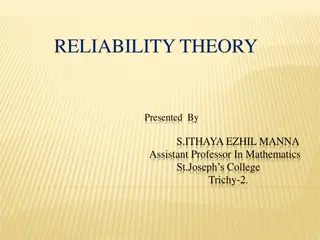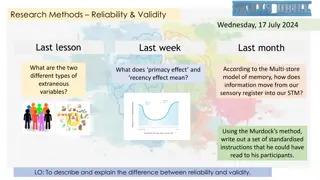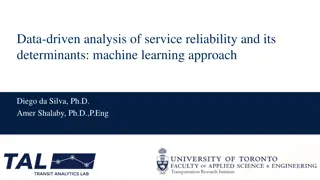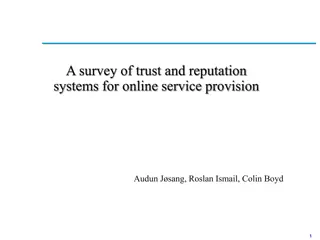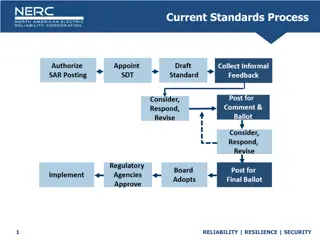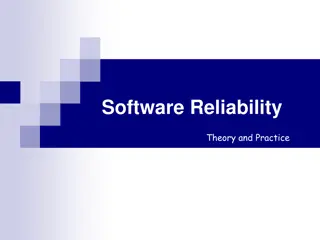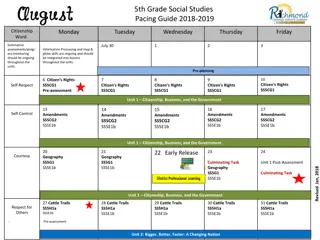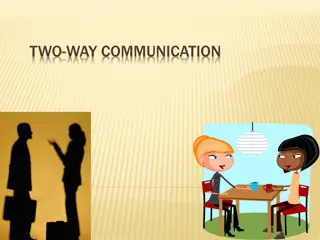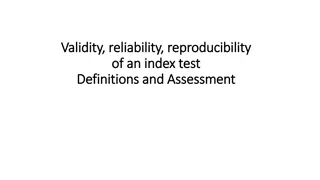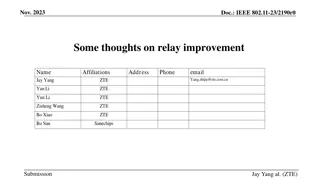Human-Centered AI: Ensuring Reliability and Trustworthiness
Exploring the intersection of Human-Computer Interaction and Artificial Intelligence to enhance understanding and trust in smart machines. The workshop delves into explainable AI, psychological models, and the importance of effective explanations in fostering trust. A naturalistic study reviewed cases of explaining complex scenarios related to AI and technology, providing valuable insights. Examples ranging from technical failures to critical incidents emphasize the need for transparent and reliable AI systems.
Download Presentation

Please find below an Image/Link to download the presentation.
The content on the website is provided AS IS for your information and personal use only. It may not be sold, licensed, or shared on other websites without obtaining consent from the author. Download presentation by click this link. If you encounter any issues during the download, it is possible that the publisher has removed the file from their server.
E N D
Presentation Transcript
Presentation to: Human-Computer Interaction Lab Workshop: Human-Centered AI: Reliable, Safe & Trustworthy 28 MAY 2020 Artificial Intelligence Quotient (AIQ): Helping people get smarter about smart machines Gary Klein, Ph.D. MacroCognition LLC ? ? 2 ? 1 4 5 3 6 ? 8 9 7 ?
Distribution Statement "A" (Approved for Public Release, Distribution Unlimited) 2 XAI Development Challenges Task XAI I understand why I understand why not I know when you succeed I know when you fail I know when to trust you I know why you erred New Machine Learning Process Training Data Explainable Model Explanation Interface User Explainable Models Explanation Interface Psychology of Explanation integrate state-of-the-art HCI with new principles, strategies, and techniques to generate effective explanations develop a range of new or modified machine learning techniques to produce more explainable models summarize, extend, and apply current psychological theories of explanation to develop a computational theory TA 2: Psychological Models TA 1: Explainable Learners
Naturalistic Study Reviewed n=74 cases of explaining Not explanations but rather the process of explaining Some involved Information Technology and AI; most did not Mix of local examples ( Why did something happen? ) and global examples ( How does that work? )
Partial List of Examples 1. Why did Watson answer Toronto? 2. How does a transistor work? 3. Why are maggots in my dead refrigerator? 4. Why did Air France #447 crash? 5. How does AlphaGo work? 6. How did Magnus Carlsen come up with his dramatic queen sacrifice? 7. Why did a petrochemical plant operator misdiagnose a distillation tower upset? 8. Why did my GPS choose a poor route from SF airport to Monterey? 9. In Desert Storm, why did our Patriot missile system shoot two friendly airplanes? 10. Why did a policeman shoot an African American Wal-Mart shopper in Ohio? 11. Why did the FBI confrontation with David Koresh end in disaster? 12. Why did the USS Vincennes shoot down an unarmed Iranian airliner? 13. Why did the USAF F-15s shoot down 2 US Army helicopters in Iraq in 1994? 14. Why did KAL 007 get shot down? 15. Why did the Royal Majesty cruise ship get grounded? 16. Why do some digital watches fail to wake up their owners? 17. Why are ceiling fans hard to predict? 18. Why do motel clock alarms fail to wake us up? 19. Why do automobile cruise control systems sometimes run amok? 20. Why did the automatic blood pressure machine deceive the surgical team? 21. Why did the British naval officer order the shoot down of a new track? 22. Why do airplane autopilots sometimes quit working with no warning? 23. Why was Blitzkrieg so effective in WW2? 24. Why did the USS John McCain collide with the merchant ship? 25. What caused the Uberlingen air collision?
Three models of Naturalistic Explaining Local explaining Global explaining Self-explaining
Local: Event to be explained Why did it do that? Learner Background Sophistication (mental model) Trigger: Surprise (Violated Expectancy) Diagnosis: Identify the critical belief/information Explainee Goals Build the Explanation Time Pressure Other: Contrast, analog, cause Visualization Story Common Ground Issues Package the Explanation Tradeoff: Effort/Cost/ Time Mental Strain: Story limits 3 causes & 6 shifts Story content: Device, flaws, design decisions Situation Assessment Stopping point= perspective shift criterion (Would I have done it?)
Whats new about the NDM account of explaining? Local Explaining centers on Surprise (violated expectancy) (vs. filling slots) Diagnosis of violated expectancies (vs. shifting weights): a single issue NOT: Gisting and trimming details and simplifying Global explaining of a device is not just how a device works, but also how it fails, how to do workarounds, how the operator may get confused Explanatory Template: Components of the system, causal links between the components, challenges the developers had to overcome, near neighbors and contrasts, and exceptions limitations of the system Perspective shift as a stopping point and as a gauge of plausibility. If I was in the situation, I would have taken the action. Language of reasons, not correlations Self-explaining revolves around plausibility judgments
AIQ: A suite of cognitive support tools Non-technological methods to promote understanding of specific AI systems Self-explaining scorecard (Klein, Hoffman & Mueller, 2018)
Self-Explaining Scorecard Ordinal Levels Example 1. Null Heat maps, linguistic features illustrate some of the analyses done by the AI. The user typically self-explains by blending these surface features with other forms of information Demonstrations and diagrams are examples of the AI generating predictions or recommendations. At the global level they take the form of descriptions of how the AI works. Choice logic; goal stacks are depictions of AI reasoning. These are ways to look under the hood of the AI to get some idea of how it is making decisions. 2. Features 3. Successes 4. Decision Logic Instances of AI mistakes are often very informative as they illustrate limitations of the AI as well as illustrate how the AI works (and doesn t work). 5. Failures Choice logic factor weights for different conditions or for successes vs. failures. Goal stacks can contrast successes and failures of different drone missions. 6. Comparisons Cognitive tutorial describes the reasons for failures. Letting the user manipulate the AI and infer diagnoses see the effects on the AI outputs. 7. Diagnosis of Failures
AIQ: A suite of cognitive support tools Non-technological methods to promote understanding of specific AI systems Self-explaining scorecard (Klein, Hoffman & Mueller, 2018) XAI scales (trust, explanation goodness, explanation satisfaction, mental model adequacy) (Hoffman Mueller, Klein & Litman, 2018) Cognitive Tutorial (Mueller & Klein, 2011) Brief up-front global description of the AI system how it works, examples of how it doesn t work, diagnoses for its limitations ShadowBox calibration (Klein & Borders, 2016) Guidelines for evaluation design (Hoffman, Klein & Mueller, January 2018) User-as-developer Discovery platform XAI Playbook for different audiences: users, developers, regulators Collaborative XAI (CXAI)
Collaborative XAI (CXAI) Basis in the Literature 1. Explanation as a collaborative process 2. Collaborative tutoring by learners can be as effective as learning from a good teacher CXAI Concept Enable users of AI systems to learn from each other and share experiences in order to gain sophistication in understanding how AI systems work, and how they fail, the reasons for the failures, and suggestions and tricks for working around the failures. Here's something that surprised me. Here's how I corrected a mistake Here s a trick you can Here's something you can trust (or not trust). try. Here s how it can fool you.
AIQ: A suite of cognitive support tools Non-technological methods to promote understanding of specific AI systems Self-explaining scorecard (Klein, Hoffman & Mueller, 2018) XAI scales (trust, explanation goodness, explanation satisfaction, mental model adequacy) (Hoffman Mueller, Klein & Litman, 2018) Cognitive Tutorial (Mueller & Klein, 2011) Brief up-front global description of the AI system how it works, examples of how it doesn t work, diagnoses for its limitations ShadowBox calibration (Klein & Borders, 2016) Guidelines for evaluation design (Hoffman, Klein & Mueller, January 2018) User-as-developer Discovery platform XAI Playbook for different audiences: users, developers, regulators Collaborative XAI (CXAI)
Thank you! Gary Klein, Ph.D. MacroCognition LLC 3601 Connecticut Ave NW #110 Washington, DC 20008 gary@macrocognition.com 937/238-8281





